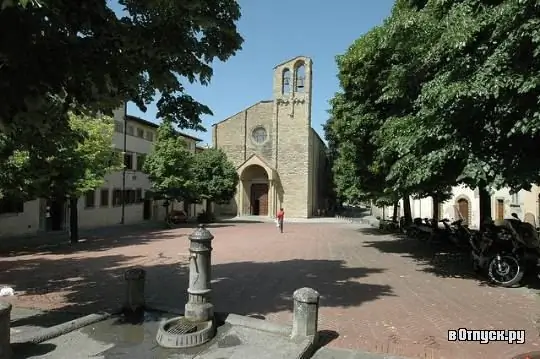
Description of the attraction
Piazza San Domenico is one of the most beautiful squares in Arezzo, recently renovated to bring back the charm of the past. Nearby are the fortress and the city park "Il Prato" with its pine alleys and benches for relaxation.
Along Via San Domenico there are a number of houses built in the Middle Ages and rebuilt several times. Each of these elegant buildings has a patio and garden. The large, austere building on the left is the Palazzo Fossombroni, which belonged to the 19th century scholar and politician Vittorio Fossombroni. A monument to this figure is erected in Piazza San Francesco. The Palazzo once housed a huge stone fireplace made in 1533 by Simone Mosca, which can now be seen in the State Museum of Medieval and Modern Art. In the first half of the 20th century, Palazzo Fossombroni belonged to the municipality of Arezzo, and now houses the offices of the local administration.
Next to the Palazzo is the Dominican monastery and the Church of San Domenico with an amazing bell tower - one of the most impressive in the city. The Gothic church was built in the 13-14th centuries: it looks charming, even though it is quite simple in shape. The façade is adorned with a bell tower with two bells dating from the 15th century. The narthex of the church was renovated in the 1930s along with the main portal. Inside, San Domenico consists of a single nave ending in three chapels. On the sides are Gothic windows with black and white frames. The interior is decorated with frescoes by painters from Arezzo and Siena from the 14th to 15th centuries, and the true treasure of the church is the 13th century Crucifix by Cimabue. From the Dominican monastery, little has survived to this day - only two sides of the elegant cloister and a large hall. Only a few novices live here today.
On the right, you can see the city walls and the antique gate of Porta San Biagio, also known as Porta Pozzuolo, behind which is a meadow with artifacts from the Etruscan and Roman periods. The gates were built in the 13th century, then, in the 16th century, they were closed and reopened only after the Second World War. It was then that they began to be incorrectly called Porta San Biagio (this was the name of the gate near the park "Il Prato").






